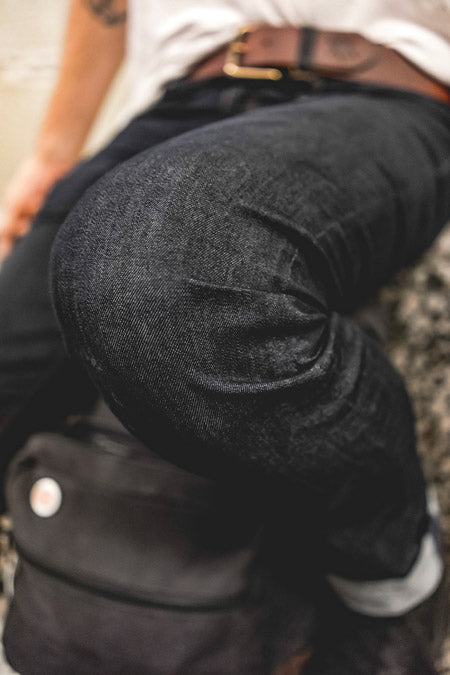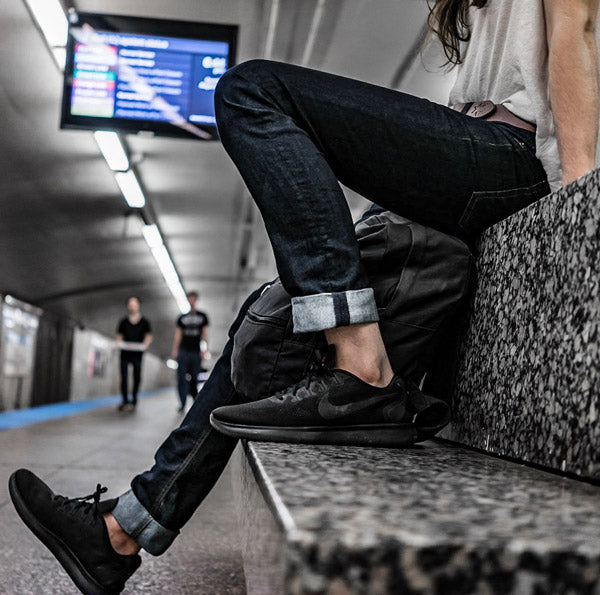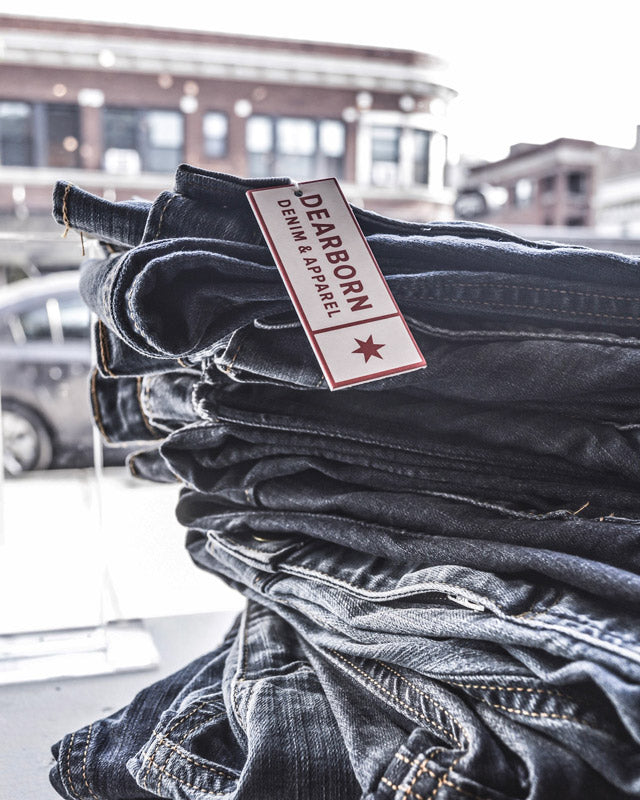The Secret To Extremely Comfortable Jeans?

About 3 years ago I had to make a decision: do what everyone else was doing - or don’t.
If you’re gonna make jeans, the high-end denim market is all about “raw selvedged denim.” For good reasons - nostalgia for the early denim makin’ days + good looking + well made.
One problem; I didn’t like wearing them. They were uncomfortable and when they finally broke in, I still found myself yearning for some shorts when I got home (mad respect for selvedged nonetheless).
I wanted to make good looking well made jeans that were so pleasant to wear, you didn’t wanna take them off when you got home.

So, how do we do it?
Three things:
- The type of cotton used
- How the yarns are spun
- How the fabric is woven
Do we really want to tell everyone on the internet the recipe?
Hell yeah, we do!
I’m talking our blue denim and Medium wash denim now:
Ring Spun (RS) Amsler 100% cotton warp yarns.
RS vs. Open End (OE) is how the cotton fibers are twisted together to form a yarn. RS was largely abandoned in the 1970s for OE despite RS providing a superior yarn in terms of strength and comfort - simply because OE is cheaper to make.
For the older gentleman who complain about new jeans saying “they don’t make’m like they used to” but can’t point to exactly why… this is why, (and weaker threads and changing styles ect, but the switch from RS to OE is a big part of it).
For the weft yarns:
Our tri blended weft yarns are the best in our opinion.
The Tri blended:
- cotton
- polyester
- spandex (a bit of stretch just makes life better)

Why does our stretch work?
First, the typical problems with stretch is that it stretches out, sags, and loses shape.
Ours have some of the best elastic retention you can get. We made sure of it.
History: 2010 cotton prices spiked and yoga pants were on the rise. Denim makers started substituting rayon into the fiber content of their jeans to stay competitive and cut prices.
Rayon contributes to a very soft hand, but is TERRIBLE when it comes to elastic retention. It stretches out and never regains shape. This leads to saggy jeans after a few hours of wear.
It was (still is) being used across the board, from cheap and happy brands to “high fashion” expensive brands.
We DON’T use rayon and wont ever use it.

Fabric weight is another factor.
Our jeans hangout around 10oz. A lighter fabric usually means a bit more comfort, simple as that. “Doesn’t that make it cheap?” Nope, those are marketing tactics talking.
With something like fabric weight it is easy to fall into “bigger is better, bigger is stronger.” Not necessarily true! Heavier fabric weights are often a necessity of needing more weak yarns for the fabric to have enough strength. Now, some people prefer a heavier weight and we plan to make one in the future for those folks, but if comfort is your concern, 10oz is where it is at!
That’s it.
Why comfortable?
Because we want to make jeans people want to wear.
How?
See above and put in the hours to make it happen.
✌️ + 🖖
Rob
The Secret To Extremely Comfortable Jeans? ✶✶✶✶ " ... Do we really want to tell everyone on the internet the recipe? Hell yeah, we do! " Read: https://goo.gl/SP8KAB
Posted by Dearborn Denim & Apparel on Friday, May 4, 2018
